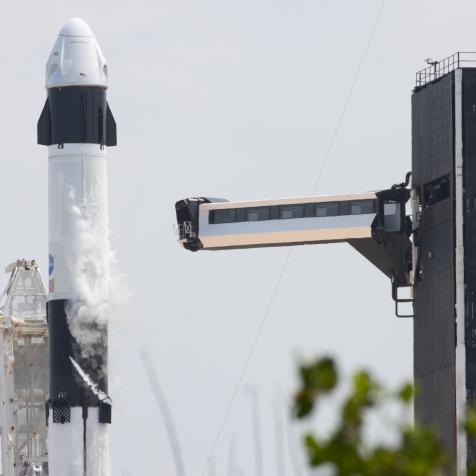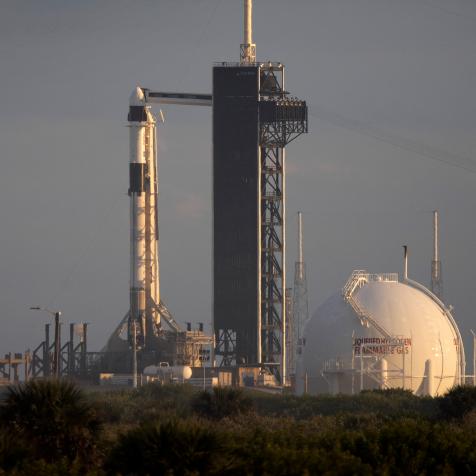
NASA/GCTC/Andrey Shelepin
Expedition 64 to Launch on October 14
One NASA astronaut and two Roscosmos cosmonauts of Expedition 64 are scheduled to launch to the ISS on Wednesday, October 14 at 1:45AM ET for a six month stay. Let’s learn the details!
(Updated on October 14, 2020)
The three members of Expedition 64, NASA astronaut Kate Rubins, Roscosmos cosmonaut Sergey Ryzhikov, and Roscosmos cosmonaut Sergey Kud-Sverchkov are preparing to launch to the ISS on October 14, 2020, at 1:45AM ET aboard a Soyuz MS-17 spacecraft from the Baikonur Cosmodrome in Kazakhstan. They will experience a three-hour spaceflight to reach the orbital outpost. The Soyuz MS-17 spacecraft is scheduled to dock with the station’s Rassvet module at 4:52AM ET. Expedition 63 Commander Chris Cassidy of NASA, Roscosmos cosmonaut Anatoly Ivanishin, and Roscosmos cosmonaut Ivan Vagner who have been aboard the station since April of this year will greet them. The Expedition 63 crew members are planning to depart the ISS, heading to Earth, on October 21, 2020, in the Soyuz MS-16 spacecraft that they arrived in months ago.
Expedition 64 will be awaiting the arrival of remaining crew members, NASA astronauts Mike Hopkins, Victor Glover, Shannon Walker, and Japan Aerospace Exploration Agency astronaut Soichi Noguchi, who are scheduled to launch on NASA’s SpaceX Crew-1 mission to the ISS in November 2020 from Cape Canaveral, Florida.

NASA/SpaceX
From left, Mission Specialist Shannon Walker, Pilot Victor Glover, Crew Dragon Commander Michael Hopkins – all NASA astronauts – and Japan Aerospace Exploration Agency (JAXA) astronaut and Mission Specialist Soichi Noguchi are seated in SpaceX’s Crew Dragon spacecraft during crew equipment interface training.
The seven crew members of the new expedition will continue the scientific work of Expedition 63 and the many expeditions that have come before them. Scientific experiments in the fields of biology, biotechnology, physical science, and Earth science aboard the microgravity laboratory yield extremely important results.
NASA TV will be covering the launch on October 14.
NASA astronaut Kate Rubins, Roscosmos cosmonaut Sergey Ryzhikov, and Roscosmos cosmonaut Sergey Kud-Sverchkov arrived safely to the ISS at 4:48AM ET.
The three crew members of Expedition 64 have begun their six month stay aboard the space station.


















